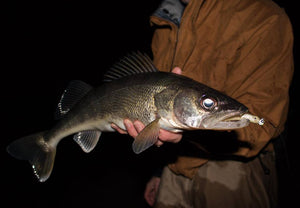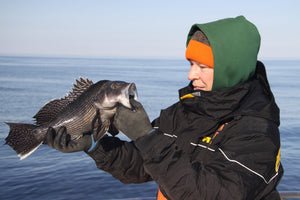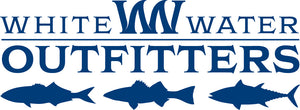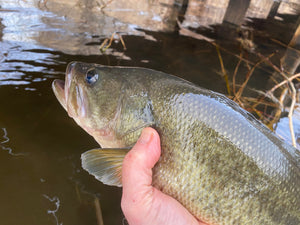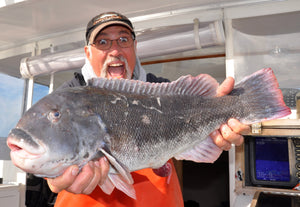KEEP IT SIMPLE TO CATCH MORE COD
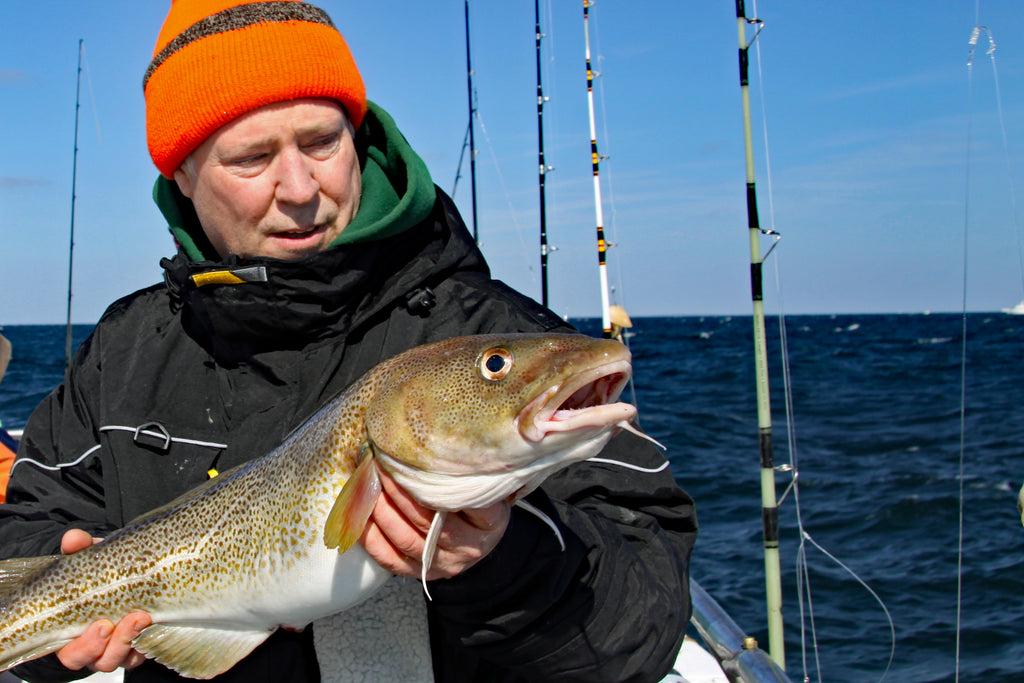
Let’s face it, with blackfish and sea bass off the table following the holidays, cod are really the only game in town from a saltwater day trip perspective come January and February. Of course, the problem with cod is that some years see solid catches while others, well, not so much. Still, there was a noticeable sprinkling of baccala being caught prior to the holidays, so here’s hoping 2022 gets off to a good start and includes a few fat white hake and feisty pollack as well.

Naturally, you’ll want to choose a day with calm winds and mild temperatures when setting your sights on “Mr. Whiskers.” Be sure to also dress warm, wearing multiple layers of clothes topped off by a water-proof jacket and bib pants or trousers. Also, be sure to get to the boat early in order to guarantee a choice spot along the rail in the bow or stern on pay-to-play vessels.
Once you finally set sail resolve to keep things simple. Cod aren’t overly complicated fish, especially when you have a good captain at the helm. Focus on getting things right at the terminal end of your line and odds favor you’ll return with enough fillets for several delicious dinners. To that end, here’s a trio of tips for applying the K.I.S.S principle to maximize your efforts.
Waist High Baits
There are several popular terminal set-ups for cod from which to choose including the high-low rig, basic bottom rig and jig rig. Add to each of these the option of tying in one or more teasers and how high or low to place the hook, and there’s actually plenty to consider.
When bait-fishing for cod, be it with cut strips of skimmer clam, herring chunks or even white crabs left over from blackfish season, most anglers start out with a hi-low “chicken rig” featuring size 5/0 or 6/0 sproat, beak or octopus style hooks. The large hooks on this rig tend to discourage smaller fish from biting so you can concentrate on cod and other larger keepers like pollack and white hake. For more of a mixed bag, size 4/0 hooks will fill the bill.

If you prefer to tie your own rigs, a single-hook option with a 5/0 hook set waist-high can further limit pecks from smaller fish, giving keeper class cod a better shot at competing for your baits. Whether you’re 5’6” or 6’5”, waist-high placement guarantees your hook is in the primary codfish strike zone 2-1/2 and 3-1/2 feet above the bottom. To tie this rig use a dropper loop to place a sproat or octopus style hook into a 5- to 6-foot length of 40-to 50-pound test mono leader and, depending on current strength, add an 8- to 12-ounce bank sinker via an end loop. If you’d like to add a teaser, be it tube, soft plastic or bio bait, place it 12” to 20” inches above the bait hook. Six to 8” Berkley Gulp!® Saltwater Jigging Grubs in white, pink or red belly shrimp color schemes all catch their share of fish.
Do The Diamond Dance

Bait-fishing is the usual approach when the cod schools are scattered, holding near sticky structure or simply off their bite. When herring show up, however, cod often school tightly and pursue the big, silvery baitfish over more open bottom. That’s when diamond jigs shine bright.
If you’ve used diamond jigs for stripers, you already know the routine. The difference when targeting cod is that you’ll need bigger jigs to get to the bottom quickly. Choose an 8- to 12-ounce smooth or hammered single hook diamond jig in silver or gold and tip it with a hot pink, red or chartreuse jelly worm or soft-plastic trailer. Go ahead and add a bright colored teaser an arm’s length above the jig, too. Since you’ll be actively working this rig and not allowing it to sit on the bottom as you would a clam bait, the number of smaller scavengers you’ll encounter should be minimal.
Another key to jigging cod, as with jigging stripers, is to work the lure at a slow to moderate speed. As opposed to bluefishing, where a fast retrieve is needed to excite your target, cod jigging calls for a steady, comfortable pace. Drop the lure to the bottom, crank up eight to ten turns of the reel handle then disengage the reel and allow your lure to free-fall to the bottom again. Repeat the process over and over, setting the hook at the slightest bump or sensation of extra weight.
Tough and Stringy
When it comes to codfish bait, skimmer clam reigns supreme. It is, however, possible to offer even a trophy-class codfish too much of a good thing. Many anglers string several strips of clam together in the hopes of attracting big fish with a huge pile of bait. That rarely works, however, since a big glob of clam hangs limply on the hook with little or no natural motion.
Rather than worry about your bait being big, make it a point to ensure every piece of clam you present is properly skewered on the hook. Start with one or two pieces of skimmer that have both a tough rim section to hold the hook as well as stringy ribbon to wave enticingly in the current. Pass the point and barb through the tough section at least twice and allow the rest to hang free. This presentation gives cod a clean target while ensuring the hook point remains clear so it can easily dig in when you lift the rod after feeling a bite.
From that point on, the rest is easy. Reel up smooth and steady with the pool fish at the end of your line, count your winnings on the way home, and be sure to take care of the mates at day’s end.
- Bryce Poyer


